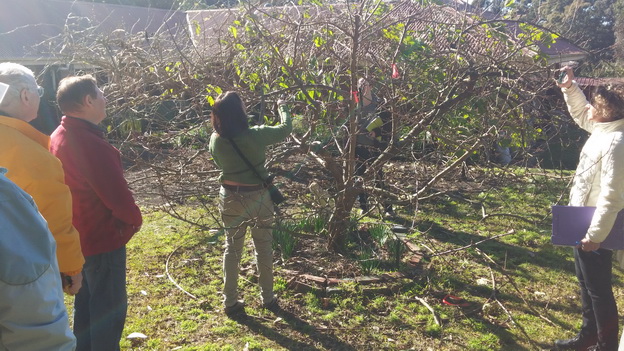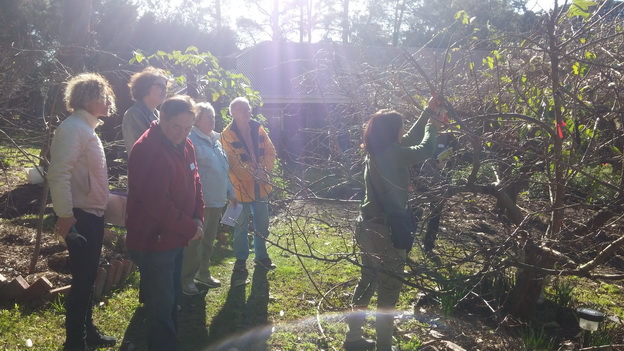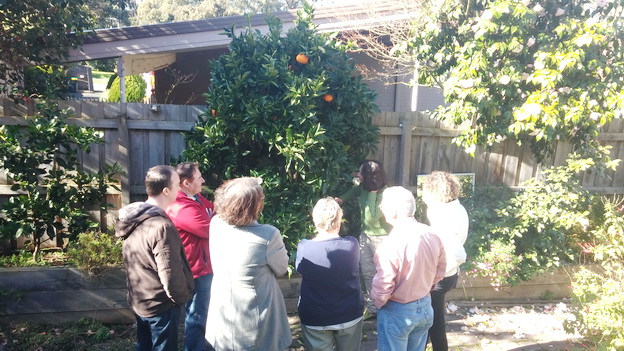Winter Fruit Tree Maintenance
I'd been holding out pruning some of my fruit trees until this workshop so I was itching to get into them. Some of the trees are already showing signs of imminent budburst so any winter pruning ought to happen by this stage. After an initial practice inside with some 'pretend' trees, my troop of backyard fruit growers were ready to hit the real thing. We have about 30 fruit trees on the property of My Green Garden so there was plenty to demonstrate on.
Armed with secateurs, freshly cleaned and sharpened, we all headed outdoors. For a winter's day, it was quite sunny but very windy. Gale force winds had been predicted but the shelter of the neighbouring pine trees provide a windbreak for my much smaller fruit trees so the wind wasn't an issue. What was a problem was the sunshine. Staring into the trees can be blinding when you are trying to see the branches against the bright light.
When faced with a fruit tree that has grown far too large to net, to spray or to reach the fruit, it is time for drastic action. Knowing what action to take is what most people who go to fruit tree pruning workshops are after. Most are worried about what might happen by any pruning cuts that they make especially if they need to get the trees back down to a manageable size. (I suppose this makes sense: if peoples' trees are being kept to size and producing well, then they're not the ones coming to workshops!).
So often they are inherited trees, coming with the house they have bought. This means that any formative pruning (if it happened at all) has well and truly grown out and, after several seasons of neglect, the tree has done what it always does - it grows!
Best course of action with any pruning is to be systematic about it. There is an order of pruning which is worth following and we went through it with several trees, each that fruited on wood of different ages. That's another reason why backyard gardeners get so confused when confronted by an overgrown tree. There are consequences to pruning when the trees fruit differently to each other.
We followed my systematic approach but in every case, there are decisions to be made. So a major message that I aimed to get across is to stand back and observe: see what previous years' cuts have done to the shape of the tree to predict what might happen again; to see what the current shape is and what you would like it to be; and to see (and mark) what sorts of major renovations might need to be made over several years. Loads of information and best delivered when faced with real live trees, with actual decisions being made at each cut. The beauty of having a workshop done in the field is that it takes it out of the text book with stylized line drawings that all make sense until you're faced with a tree! Only benefit of the text book instructions is that the sun isn't blinding you at the same time..
My charges today were visibly itching to get home to put their new found knowledge into action. However, I made them stay long enough to enjoy some morning tea, with some freshly baked scones and homemade jams, cheeses with my quince paste and chutney and hot coffee and tea, all well deserved after their work in the field!
Well done to my apprentice fruit tree pruners! Wishing you all happy and fruitful trees.



